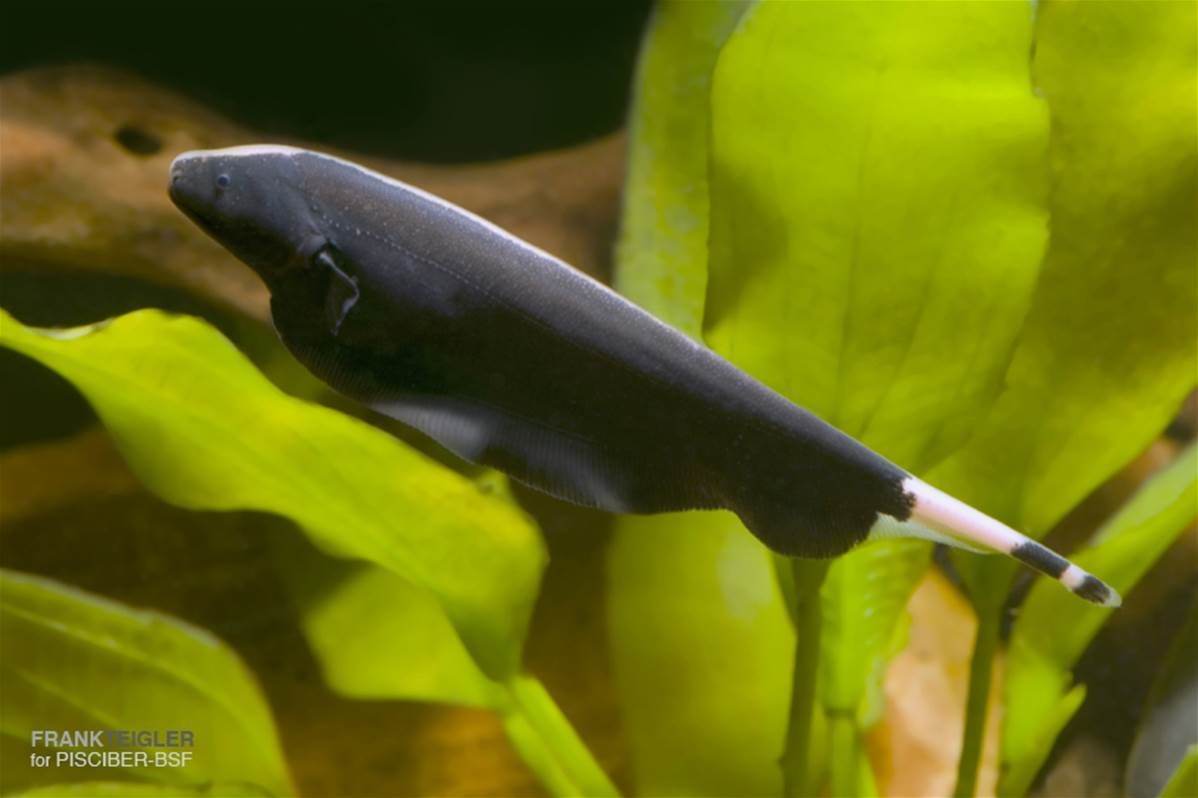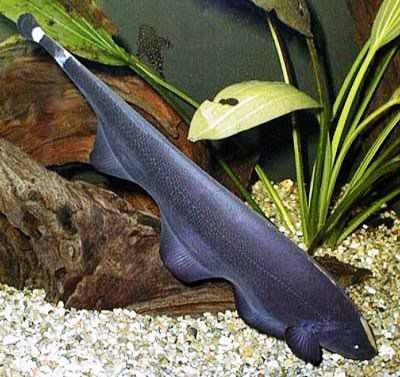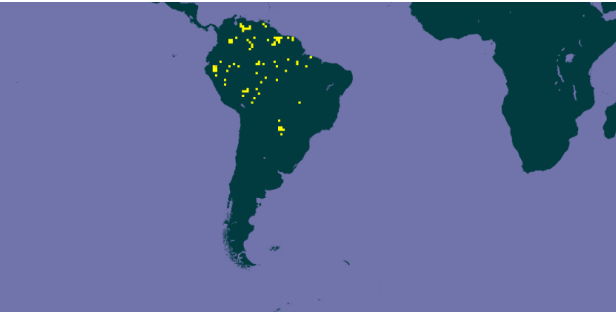Black Ghost Knifefish (Apteronotus albifrons)
- Apr 30, 2021
- Arianna Rizzi
- 2325 0 0
Apteronotus albifrons called black ghost knife fish is a nocturnal predator. It has an electric organ, reaches a considerable size, needs a lot of space to swim, and prefers environments with strong currents: not suitable for common home aquariums.
Black ghosts are extraordinary fish that often attract aquarists and are often bought without asking about their needs and what they need to lead a dignified existence. These fish become very large, it can reach 50 cm in length and 15-20 years of age. It needs a tank of at least 1,18 inches in length to swim easily and a river-aquarium type because they must live in a strong water current.
Be wary of retailers who claim that this fish can also do well in a 40-47 inches tank, as this will inevitably lead to a stunting of growth, and therefore to a greater predisposition to disease and premature death.

https://aquapez.es/cuchillos/880-pez-cuchillo-apteronotus-albifrons-6-7-cm.html
DESCRIPTION:
The fish is all black except for two white rings on its tail and a white blaze on its nose, occasionally extending into a stripe down its back. It moves mainly by undulating a long fin on its underside.
These fish have a unique swimming behavior. Instead of turning sideways or hunching the body to catch prey, as other fish generally do, they simply back off when coming across something that may be edible. They use their long anal fin to propel themselves backward faster than they would forward and thus regulate their prey attacks.
CURIOSITY:
Electroreceptor organs distributed over the entire body surface of the fish can be classified into two major classes. Tuberous electroreceptor organs are specialized for detecting modulations of the high-frequency self-generated electric field (often referred to as the ‘active’ electrosense). They are used to determine the presence of nearby objects.
A second class, called ampullary organs, is specialized for detecting low-frequency electric fields arising from external sources such as the bioelectric fields generated by other aquatic organisms (the ‘passive’ electrosense) used to detect their prey.
In addition to the active and passive electrosensory systems, the fish also has a mechanosensory lateral line system. All three of these related octavolateral systems can provide information that may aid the fish when hunting for prey at night or in muddy water.
WARNING!
- Species that grow large: up to 19,6 inches
- Solitary and predatory species eat small fish
- Species that need water with a strong current and very oxygenated
- Species not reproduced in captivity, the specimens on the market all come from wild capture. Always ask the shopkeeper if the fish you are about to catch are caught or farmed.
DISTRIBUTION:
South America: from Venezuela to Paraguay and in the Paraná River. It is also found in the Amazon basin of Peru.
https://www.fws.gov/fisheries/ans/erss/uncertainrisk/ERSS-Apteronotus-albifrons-FINAL.pdf
HABITAT:
Environment: benthopelagic; freshwater; Tropical climate
Apteronotus albifrons are found in streams with strong currents, in streams with a sandy bottom.
VALUES OF WATER:
Temperature: 24-28 ° C
pH: 6-8
Hardness: 5-18 DH
BREEDING:
Minimum dimensions of the aquarium: 250x60x60h cm for a single specimen. They are very aggressive with conspecifics, and to raise two of them would take a huge aquarium.
Furthermore, if kept in less than 98 inches tanks, they have stunted growth, develop deformities and dwarfism, and die quickly.
It prefers semi-shaded environments, for which a dark sandy bottom and light-shielded by floating plants are necessary.
The ideal would be a river-aquarium type setup to properly breed Apteronotus albifrons, a strong current, and water saturated with oxygen. If kept in normal aquariums where the filter pump outlet ensures the only current, they will have a very short life. They will asphyxiate due to lack of oxygen because their organism is made to breathe where there is a lot of oxygen, where there is little, they cannot take it.
The aquarium must be densely planted with plants that form large bushes, branches, roots, and stones to form shaded areas, shelters, and hiding places, where the fish can take refuge during the day are mainly nocturnal.
Like all fish that live in running waters in nature, they are intolerant to the accumulation of pollutants in the water, which must always be very clean and free of nitrates. A regular regimen of water changes is essential.
BEHAVIOR AND COMPATIBILITY:
Apteronotus albifrons can have calm or aggressive behavior.
In general, it is a solitary and quiet species that shows aggression only towards conspecifics and is peaceful, especially if bred as the only one of its species together with other quiet fish of the same size. It should not be kept with smaller fish because it becomes aggressive and being a predator, it considers them food.

http://www.acuamanus.com.ar/products/view/180-apteronotus-albifrons.html
FEEDING:
Omnivore.
In its natural habitat, it feeds on small fish, aquatic insects, and their larvae.
In the aquarium, being almost always coming from the capture in nature, they have difficulty accepting dry feed, most of the time, they need live and frozen food, Chironomus, and with patience in general, it is possible to accustom them to the dry over time.
It should not be fed mammalian or poultry meat, such as beef or chicken hearts, because some of the lipids in these meats that the fish cannot metabolize can cause fat deposits and organ degeneration.
it is also advisable not to use live fish such as Poeciliidae or small goldfish as food, which carry with them the risk of introducing parasites or diseases, and in any case, they generally do not have a high nutritional value if not adequately put up in advance
As is usual in species that are so grateful to food, it is convenient to offer them a diet that is as varied as possible.







About author